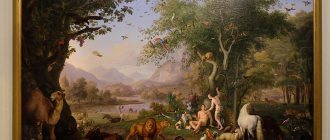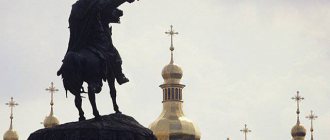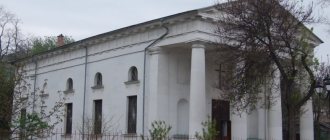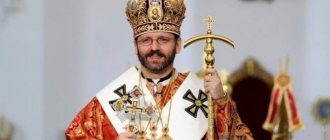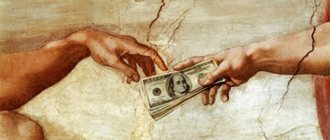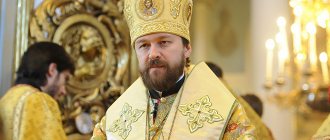On February 11, Patriarch Kirill of Moscow and All Rus' begins his first pastoral visit to the countries of Latin America, which will last until February 22 and will cover Cuba, Brazil and Paraguay. On February 12, at the Jose Marti International Airport in the Cuban capital, the head of the Russian Orthodox Church will meet with Pope Francis, who will make a stop on his way to Mexico. The meeting of the primates of the Russian Orthodox and Roman Catholic churches, which has been in preparation for 20 years, will take place for the first time. As Vladimir Legoyda, Chairman of the Synodal Department for Relations between the Church and Society and the Media, noted, the upcoming historic meeting is caused by the need for joint action in matters of assistance to Christian communities in the countries of the Middle East. “Although many problems between the Russian Orthodox Church and the Roman Catholic Church remain unresolved, the protection of Middle Eastern Christians against genocide is a challenge that requires urgent joint efforts,” Legoida said. According to him, “the exodus of Christians from the countries of the Middle East and North Africa is a disaster for the whole world.”
What problems between the Russian Orthodox Church and the Roman Catholic Church remain unresolved?
How is the Catholic Church different from the Orthodox Church? Catholics and Orthodox Christians answer this question somewhat differently. How exactly?
Catholics about Orthodoxy and Catholicism
The essence of the Catholic answer to the question of the differences between Catholics and Orthodox Christians boils down to the following:
Catholics are Christians. Christianity is divided into three main directions: Catholicism, Orthodoxy and Protestantism. But there is no single Protestant Church (there are several thousand Protestant denominations in the world), and the Orthodox Church includes several Churches independent of each other. So, in addition to the Russian Orthodox Church (ROC), there is the Georgian Orthodox Church, the Serbian Orthodox Church, the Greek Orthodox Church, the Romanian Orthodox Church, etc. The Orthodox Churches are governed by patriarchs, metropolitans and archbishops. Not all Orthodox Churches have communion with each other in prayers and sacraments (which is necessary for individual Churches to be part of the one Ecumenical Church according to the catechism of Metropolitan Philaret) and recognize each other as true churches. Even in Russia itself there are several Orthodox Churches (the Russian Orthodox Church itself, the Russian Orthodox Church Abroad, etc.). It follows from this that world Orthodoxy does not have a single leadership. But the Orthodox believe that the unity of the Orthodox Church is manifested in a single doctrine and in mutual communication in the sacraments.
Catholicism is one Universal Church. All its parts in different countries of the world are in communication with each other, share a single creed and recognize the Pope as their head. In the Catholic Church there is a division into rites (communities within the Catholic Church, differing from each other in forms of liturgical worship and church discipline): Roman, Byzantine, etc. Therefore, there are Catholics of the Roman rite, Catholics of the Byzantine rite, etc., but they are all members of the same Church.
Test on the topic
- Question 1 of 5
Which city is the center of the Catholic Church?
Start test (new tab)
Hall of Fame
To get here, take the test.
-
- Anna Kukushkina
5/5
- Anastasia Demina
5/5
- Yavkun Maxim
5/5
- Zheka Kortashov
4/5
Catholics on the differences between the Catholic and Orthodox churches
1) The first difference between the Catholic and Orthodox Churches is the different understanding of the unity of the Church. For the Orthodox it is enough to share one faith and sacraments; Catholics, in addition to this, see the need for a single head of the Church - the Pope;
2) The Catholic Church differs from the Orthodox Church in its understanding of universality or catholicity. The Orthodox claim that the Universal Church is “embodied” in each local Church, headed by a bishop. Catholics add that this local Church must have communion with the local Roman Catholic Church in order to belong to the Universal Church.
3) The Catholic Church confesses in the Creed that the Holy Spirit proceeds from the Father and the Son (“filioque”). The Orthodox Church confesses the Holy Spirit emanating only from the Father. Some Orthodox saints spoke about the procession of the Spirit from the Father through the Son, which does not contradict Catholic dogma.
4) The Catholic Church professes that the sacrament of marriage is for life and prohibits divorce, the Orthodox Church allows divorce in some cases;
5) The Catholic Church proclaimed the dogma of purgatory. This is the state of souls after death, destined for heaven, but not yet ready for it. There is no purgatory in Orthodox teaching (although there is something similar - ordeal). But the prayers of the Orthodox for the dead suggest that there are souls in an intermediate state for whom there is still hope of going to heaven after the Last Judgment;
6) The Catholic Church accepted the dogma of the Immaculate Conception of the Virgin Mary. This means that even original sin did not touch the Mother of the Savior. Orthodox Christians glorify the holiness of the Mother of God, but believe that she was born with original sin, like all people;
7) The Catholic dogma of Mary's assumption to heaven body and soul is a logical continuation of the previous dogma. The Orthodox also believe that Mary resides in Heaven in body and soul, but this is not dogmatically enshrined in Orthodox teaching.
 The Catholic Church has accepted the dogma of the primacy of the Pope over the entire Church in matters of faith and morals, discipline and government. The Orthodox do not recognize the primacy of the Pope;
The Catholic Church has accepted the dogma of the primacy of the Pope over the entire Church in matters of faith and morals, discipline and government. The Orthodox do not recognize the primacy of the Pope;
9) In the Orthodox Church one rite predominates. In the Catholic Church, this rite, which originated in Byzantium, is called Byzantine and is one of several. In Russia, the Roman (Latin) rite of the Catholic Church is better known. Therefore, the differences between the liturgical practice and church discipline of the Byzantine and Roman rites of the Catholic Church are often mistaken for differences between the Russian Orthodox Church and the Catholic Church. But if the Orthodox liturgy is very different from the Roman rite mass, then the Catholic liturgy of the Byzantine rite is very similar. And the presence of married priests in the Russian Orthodox Church is also not a difference, since they are also in the Byzantine rite of the Catholic Church;
10) The Catholic Church has proclaimed the dogma of the infallibility of the Pope in matters of faith and morals in those cases when he, in agreement with all bishops, affirms what the Catholic Church has already believed in for many centuries. Orthodox believers believe that only the decisions of the Ecumenical Councils are infallible;
11) The Orthodox Church accepts the decisions of only the first seven Ecumenical Councils, while the Catholic Church is guided by the decisions of the 21st Ecumenical Council, the last of which was the Second Vatican Council (1962-1965).
It should be noted that the Catholic Church recognizes that local Orthodox Churches are true Churches that have preserved apostolic succession and true sacraments.
Despite their differences, Catholics and Orthodox Christians profess and preach throughout the world one faith and one teaching of Jesus Christ. Once upon a time, human mistakes and prejudices separated us, but still faith in one God unites us.
Jesus prayed for the unity of His disciples. His disciples are all of us, both Catholics and Orthodox. Let us join in His prayer: “That they all may be one, just as You, Father, are in Me, and I in You, that they also may be one in Us, so that the world may believe that You sent Me” (John 17:21). The unbelieving world needs our common witness for Christ. This is how Russian Catholics assure us that the modern Western Catholic Church thinks in an inclusive and conciliatory way.
Orthodox view of Orthodoxy and Catholicism, their commonality and differences
The final division of the United Christian Church into Orthodoxy and Catholicism occurred in 1054. Both the Orthodox and Roman Catholic churches consider only themselves to be “one holy, catholic (conciliar) and apostolic Church” (Nicene-Constantinopolitan Creed).
The official attitude of the Roman Catholic Church towards the Eastern (Orthodox) churches that are not in communion with it, including local Orthodox churches, is expressed in the Decree of the Second Vatican Council “Unitatis redintegratio”:
“A considerable number of communities have separated from full communion with the Catholic Church, sometimes not without the fault of people: on both sides. However, those who are now born into such Communities and are filled with faith in Christ cannot be accused of the sin of division, and the Catholic Church receives them with brotherly respect and love. For those who believe in Christ and have been duly baptized are in a certain communion with the Catholic Church, even if incomplete... Nevertheless, having been justified by faith in baptism, they are united with Christ and, therefore, rightly bear the name of Christians, and children of the Catholic The churches rightfully recognize them as brothers in the Lord.”
The official attitude of the Russian Orthodox Church towards the Roman Catholic Church is expressed in the document “Basic principles of the attitude of the Russian Orthodox Church towards heterodoxy”:
The dialogue with the Roman Catholic Church has been and must be built in the future taking into account the fundamental fact that it is a Church in which the apostolic succession of ordinations is preserved. At the same time, it seems necessary to take into account the nature of the development of the doctrinal foundations and ethos of the RCC, which often ran counter to the Tradition and spiritual experience of the Ancient Church.
Notes[ | ]
Comments
- The pope's signature appears in the Latin version.
Sources
- The Holy Bible, Santa Biblia, Biblia, Bíblia Sagrada, Holy Bible, Bibbia (Old Hebrew)
- Congregatio pro Doctrina Fidei
Catechismus Catholicae Ecclesiae (lat.) -
(untranslated)
, 1994. - Marshall, T. W.
Notes of the Episcopal Polity of the Catholic Church / Thomas William Marshall. - L.: Levey, Rossen and Franklin, 1844. - ↑ 12
Pontifical Yearbook 2021 and the Annuarium Statisticum Ecclesiae 2014: dynamics of a Church in transformation, 03/05/2016 // Summary of Bulletin. (Accessed January 25, 2017) - ↑ 1 2
Vatican statistics report church growth remains steady worldwide
(unspecified)
. National Catholic Reporter (May 2, 2015). Date accessed: July 1, 2015. - Lumen gentium
. Chapter III - ↑ 12
O'Collins, p. v (preface). - Catechism of the Catholic Church. Compendium.
- Cyril of Alexandria, St. On the holy symbol
- Catechism of the Catholic Church. — Libreria Editrice Vaticana, 2003.
- Documents of the Second Vatican Council (unspecified)
. Retrieved May 19, 2013. Archived May 25, 2013. - Vatican congregation reaffirms truth, oneness of the Catholic Church (unspecified)
. Catholic News Service. Access date: March 17, 2012. - Woods, pp. 115-27
- Duffy, p. 133.
- ex of the canons of the eastern churches
- John Paul II, Pope
Laetamur Magnopere
(undefined)
. Vatican (1997). Access date: March 9, 2008. Archived May 25, 2013. - Catechism of the Catholic Church, § 777-778 (unspecified)
. Access date: May 19, 2013. - Catechism of the Catholic Church, § 1256 (undefined)
. Access date: May 18, 2013. - Short Catechism (undefined)
. Access date: May 19, 2013. - Catechism of the Catholic Church, § 1021-1022, 1051 (unspecified)
. Access date: May 18, 2013. - Catechism of the Catholic Church, § 1023-1029, 1042-1050 (unspecified)
. Access date: May 18, 2013. - Catechism of the Catholic Church, § 1030-1032, 1054 (unspecified)
. Access date: May 18, 2013. - Friedrich Meinecke.
Neue Briefe und Documente. — Oldenburg Verlag, 2012. - The expression is often attributed to Augustine the Blessed.
- Social teaching of the UGCC (undefined)
. Access date: May 19, 2013. - JWG with Roman Catholic Church
- Text of the Balamand Agreement in Russian
- Joint declaration of the Roman Catholic Church and the Orthodox Church of Constantinople on the occasion of the lifting of mutual anathemas
- Korobov P., Pushkarskaya E.
Due to the current presidencies // Kommersant. — No. 20 (February 6, 2016). — P. 1. - Alexey Bukalov, Vera Shcherbakova.
“A huge event”: the meeting of the patriarch and the pontiff as an important milestone in the relations of the churches
(unspecified)
. // TASS (February 5, 2016). Date accessed: February 6, 2021. - Sergey Startsev.
Professor: the meeting of the pontiff and the patriarch is good news for Christians
(undefined)
. RIA Novosti (February 6, 2016). Date accessed: February 6, 2016. - Religious scholar: the meeting of the patriarch and the pope is historical and sensational (unspecified)
. // RIA Novosti (February 11, 2016). Date accessed: February 12, 2016. - Slutsky: the meeting between the Pope and the Patriarch could become epoch-making (unspecified)
. // RIA Novosti (February 5, 2016). Date accessed: February 6, 2016. - Rosie Scammell.
Pope Francis and Russian patriarch to meet in Cuba in historic breakthrough (English). // Washington Post (February 5, 2016). Date accessed: February 6, 2021. - ↑ 1 2
Meeting of the millennium: the patriarch and pontiff stood up for the defense of Christians
(unspecified)
. // RIA Novosti (February 12, 2016). Access date: February 13, 2016. - Don Lattin
.
$30 Million Awarded Men Molested by `Family Priest' / 3 bishops accused of Stockton coverup, // San Francisco Chronicle (July 17, 1998). Accessed June 16, 2015. “Attorney Jeff Anderson said the Howard brothers were repeatedly molested between 1978 and 1991, from age 3 to 13.” Reverend Oliver O'Grady (English)Russian. later confessed to the abuse of many other children and the documentary Deliver Us from Evil
was made about his story and the cover-up by Diocesan officials. - Hundreds of priests shuffled worldwide, despite abuse accusation, // USA Today (June 20, 2004).
- Scott Stephens
. Catholic sexual abuse study greeted with incurious contempt, // ABC Religion and Ethics (May 27, 2011). Retrieved July 23, 2012. - Nun faces 87 charges of sex abuse // Irish Independent, 03/07/2012.
- A sex scandal in an elite Catholic gymnasium in Berlin bankrupted the Jesuit order. Archived copy of February 25, 2010 on the Wayback Machine // NEWSru.com, 02/22/2010.
- Pope Benedict apologises for Irish priests' sex abuse // BBC, 03/20/2010.
- Jenkins P.
Pedophiles and Priests: Anatomy of a Contemporary Crisis. - NY: Oxford University Press, 2001. - 224 p. — ISBN 0-19-514597-6 - Riazat Butt, Anushka Asthana.
Sex abuse rife in other religions, says Vatican // The Guardian, 09.18.2009.
Main differences in dogma
Triadological:
• Orthodoxy does not accept the Catholic formulation of the Nicene-Constantinopolitan creed, the filioque, which speaks of the procession of the Holy Spirit not only from the Father, but also “from the Son” (lat. filioque).
• Orthodoxy professes two different ways of being of the Holy Trinity: the existence of Three Persons in the Essence and Their manifestation in energy. Roman Catholics, like Barlaam of Calabria (the opponent of St. Gregory Palamas), consider the energy of the Trinity to be created: the bush, glory, light and tongues of fire of Pentecost are considered by them to be created symbols, which, once born, then cease to exist.
• The Western Church considers grace to be a consequence of the Divine Cause, similar to the act of creation.
• The Holy Spirit in Roman Catholicism is interpreted as love (connection) between the Father and the Son, between God and people, while in Orthodoxy love is the common energy of all Three Persons of the Holy Trinity, otherwise the Holy Spirit would lose its hypostatic appearance when He is identified with love.
In the Orthodox Creed, which we read every morning, the following is said about the Holy Spirit: “And in the Holy Spirit, the Lord, the Life-Giving One, who proceeds from the Father...”. These words, as well as all other words of the Creed, find exact confirmation in the Holy Scriptures. Thus, in the Gospel of John (15, 26), the Lord Jesus Christ says that the Holy Spirit comes precisely from the Father. The Savior says: “When the Comforter comes, whom I will send to you from the Father, the Spirit of truth, who proceeds from the Father.” We believe in one God in the Holy Trinity worshiped - Father and Son and Holy Spirit. God is one in essence, but threefold in persons, which are also called Hypostases. All three Hypostases are equal in honor, equally worshiped and equally glorified. They differ only in their properties - the Father is unborn, the Son is born, the Holy Spirit comes from the Father. The Father is the only beginning (ἀρχὴ) or the only source (πηγή) for the Word and the Holy Spirit.
Mariological:
• Orthodoxy rejects the dogma of the Immaculate Conception of the Virgin Mary.
• In Catholicism, the significance of the dogma is the hypothesis of the direct creation of souls by God, which serves as support for the dogma of the Immaculate Conception.
• Orthodoxy also rejects the Catholic dogma of the bodily ascension of the Mother of God.
Other:
• Orthodoxy recognizes as Ecumenical the seven Councils that took place before the great schism; Catholicism recognizes the twenty-one Councils as Ecumenical, including those that took place after the great schism.
• Orthodoxy rejects the dogma of the infallibility (inerrancy) of the Pope and his supremacy over all Christians.
• Orthodoxy does not accept the doctrine of purgatory, as well as the doctrine of the “extraordinary merits of the saints.”
• The doctrine of ordeals existing in Orthodoxy is absent in Catholicism.
• The theory of dogmatic development formulated by Cardinal Newman was adopted by the official teaching of the Roman Catholic Church. In Orthodox theology, the problem of dogmatic development has never played the key role that it acquired in Catholic theology from the middle of the 19th century. Dogmatic development began to be discussed in the Orthodox community in connection with the new dogmas of the First Vatican Council. Some Orthodox authors consider acceptable “dogmatic development” in the sense of an ever more precise verbal definition of dogma and an ever more precise expression in words of the known Truth. At the same time, this development does not mean that the “understanding” of Revelation is progressing or developing.
With some vagueness in determining the final position on this problem, two aspects characteristic of the Orthodox interpretation of the problem are visible: the identity of church consciousness (the Church knows the truth no less and no differently than it knew it in ancient times; dogmas are understood simply as the understanding of what has always existed in the Church, starting from the apostolic age) and turning attention to the question of the nature of dogmatic knowledge (the experience and faith of the Church is broader and more complete than its dogmatic word; the Church testifies to many things not in dogmas, but in images and symbols; Tradition in its entirety is a guarantor of freedom from historical accident; the completeness of Tradition does not depend on the development of dogmatic consciousness; on the contrary, dogmatic definitions are only a partial and incomplete expression of the completeness of Tradition).
In Orthodoxy there are two points of view regarding Catholics.
• The first considers Catholics to be heretics who distorted the Nicene-Constantinopolitan Creed (by adding (lat. filioque).
• The second - schismatics (schismatics), who broke away from the One Catholic Apostolic Church.
Catholics, in turn, consider the Orthodox to be schismatics who have broken away from the One, Universal and Apostolic Church, but do not consider them heretics. The Catholic Church recognizes that local Orthodox Churches are true Churches that have preserved apostolic succession and true sacraments.
Literature[ | ]
- Barsov N.I.
Catholic Church // Encyclopedic Dictionary of Brockhaus and Efron: in 86 volumes (82 volumes and 4 additional). - St. Petersburg, 1890-1907. - J. Lorz. Church History
- R. Conrad Faith of the Catholic Church
- John Paul II. I believe in the One, Holy, Ecumenical and Apostolic Church
- JL McKenzie. The Roman Catholic Church
- John O'Grady. Roman Catholic Church: Its Origin & Nature
- Marcellino D'Ambrosio. Exploring the Catholic Church: An Introduction to Catholic Teaching and Practice
- HW Crocker. Triumph—The Power and the Glory of the Catholic Church
- Thomas E. Woods Jr. How the Catholic Church Built Western Civilization
- Hans Kung. The Catholic Church: A Short History (Modern Library Chronicles)
- P. Hughes. A Popular History of the Catholic Church
- G Daly, Transcendence and Immanence: A Study in Catholic Modernism and Integralism
- Barry, Rev. Msgr. John F (2001). One Faith, One Lord: A Study of Basic Catholic Belief.
Gerard F. Baumbach, Ed.D. ISBN 0-8215-2207-8. - Bauer, Susan Wise (2010). The History of Medieval World: From the Conversion of Constantine to the First Crusade.
Norton. ISBN 978-0-393-05975-5. - Bethell, Leslie (1984). The Cambridge history of Latin America.
Cambridge University Press. ISBN 0-521-23225-2. - Bokenkotter, Thomas (2004). A Concise History of the Catholic Church.
Doubleday. ISBN 0-385-50584-1. - Bunson, Matthew (2008). Our Sunday Visitor's Catholic Almanac.
Our Sunday Visitor Publishing. ISBN 1-59276-441-X. - Bruni, Frank; Burkett, Elinor (2002). A Gospel of Shame: Children, Sexual Abuse, and the Catholic Church.
Harper Perennial. p. 336. ISBN 978-0-06-052232-2. - Chadwick, Henry (1990), "The Early Christian Community", in McManners, John, The Oxford Illustrated History of Christianity
, Oxford University Press, pp. 20-61, ISBN 0-19-822928-3 - Chadwick, Owen (1995). A History of Christianity.
Barnes & Noble. ISBN 0-7607-7332-7. - Clarke, Graeme (2005), "Third-Century Christianity", en Bowman, Alan K., Peter Garnsey and Averil Cameron. The Cambridge Ancient History
dua eldono, volume 12:
The Crisis of Empire, AD 193–337
, Cambridge University Press, pp. 589—671, ISBN 978-0-521-30199-2. - Collins, Michael; Price, Mathew A. (1999). The Story of Christianity.
Dorling Kindersley. ISBN 0-7513-0467-0. - Collinson, Patrick (1990). "The Late Medieval Church and its Reformation (1400-1600)." en John McManners. The Oxford Illustrated History of Christianity.
Oxford University Press. ISBN 0-19-822928-3. - Cook, Bernard A. (2001). Europe since 1945: an encyclopedia, Volume 2.
Taylor & Francis. ISBN 978-0-8153-4058-4. - Coriden, James A; Green, Thomas J; Heintschel, Donald E. (1985). The Code of Canon Law: A Text and Commentary, Study Edition.
Paulist Press. ISBN 978-0-8091-2837-2. - Davidson, Ivor (2005). The Birth of the Church.
Monarch. ISBN 1-85424-658-5. - Deák, István (2001). Essays on Hitler's Europe.
University of Nebraska Press. ISBN 978-0-8032-6630-8 - Duffy, Eamon (1997). Saints and Sinners, a History of the Popes.
Yale University Press. ISBN 0-300-07332-1. - Dussel, Enrique (1981). A History of the Church in Latin America.
Wm. B. Eerdmans. ISBN 0-8028-2131-6. - Faulk, Edward (2007). 101 Questions and Answers on Eastern Catholic Churches.
Paulist Press. ISBN 978-0-8091-4441-9. - Fahlbusch, Erwin (2007). The Encyclopedia of Christianity.
Wm. B. Eerdmans. ISBN 0-8028-2415-3. - Froehle, Bryan; Mary Gautier (2003). Global Catholicism, Portrait of a World Church.
Orbis books; Center for Applied Research in the Apostolate, Georgetown University. ISBN 1-57075-375-X. - Hamnett, Brian R (1999). Concise History of Mexico.
Port Chester, NY: Cambridge University Pres. ISBN 0-521-58120-6. - Hastings, Adrian (2004). The Church in Africa 1450-1950.
Oxford University Press. ISBN 0-19-826399-6. - Herring, George (2006). An Introduction to the History of Christianity.
Continuum International. ISBN 0-8264-6737-7. - Johansen, Bruce (2006). The Native Peoples of North America.
Rutgers University Press. ISBN 0-8135-3899-8. - Johnson, Lonnie (1996). Central Europe: Enemies, Neighbors, Friends.
Oxford University Press. ISBN 978-0-19-510071-6. - Kirkwood, Burton (2000). History of Mexico.
Westport, CT: Greenwood Publishing Group, Incorporated. pp. 101-192. ISBN 978-1-4039-6258-4. - Koschorke, Klaus; Ludwig, Frieder; Delgado, Mariano (2007). A History of Christianity in Asia, Africa, and Latin America, 1450–1990.
Wm B Eerdmans Publishing Co. ISBN 978-0-8028-2889-7. - Kreeft, Peter (2001). Catholic Christianity
Ignatius Press. ISBN 0-89870-798-6. - Lahey, John (1995). "Roman Curia". in McBrien, Richard; Attridge, Harold. The HarperCollins Encyclopedia of Catholicism.
HarperCollins. ISBN 978-0-06-065338-5. - Le Goff, Jacques (2000). Medieval Civilization.
Barnes & Noble. ISBN 0-631-17566-0. - Leith, John (1963). Creeds of the Churches.
Aldine Publishing Co. ISBN 0-664-24057-7. - MacCulloch, Diarmaid (2010). Christianity: The First Three Thousand Years.
Viking.
ISBN 978-0-670-02126-0. origine publikigita en 2009 fare de Allen Lane, kiel A History of Christianity - MacCulloch, Diarmaid (2003). The Reformation.
Viking. ISBN 0-670-03296-4. - MacMullen, Ramsay (1984), Christianizing the Roman Empire: (AD 100–400).
New Haven, CT: Yale University Press, ISBN 978-0-585-38120-6 - Markus, Robert (1990), "From Rome to the Barbarian Kingdom (339–700)", en McManners, John, The Oxford Illustrated History of Christianity
, Oxford University Press, pp. 62-91, ISBN 0-19-822928-3 - Marthaler, Berard (1994). Introducing the Catechism of the Catholic Church, Traditional Themes and Contemporary Issues.
Paulist Press. ISBN 0-8091-3495-0. - Marvin, John Wade (2008). "The Occitan War: a military and political history of the Albigensian Crusade, 1209-1218." Cambridge University Press. ISBN 0-521-87240-5
- McDonough, Elizabeth. (1995). "Cardinals, College of" en McBrien, Richard; Attridge, Harold. The HarperCollins Encyclopedia of Catholicism.
HarperCollins. ISBN 978-0-06-065338-5. - McManners, John (1990). "The Expansion of Christianity (1500-1800)". en McManners, John. The Oxford Illustrated History of Christianity.
Oxford University Press. ISBN 0-19-822928-3. - Morris, Colin (1990). "Christian Civilization (1050-1400)". en McManners, John. The Oxford Illustrated History of Christianity.
Oxford University Press. ISBN 0-19-822928-3. - Murray, Chris (1994). Dictionary of the Arts.
Helicon Publishing Ltd. ISBN 0-8160-3205-X. - Noble, Thomas; Strauss, Barry (2005). Western Civilization.
Houghton Mifflin Company. ISBN 978-1-84603-075-8. - Norman, Edward (2007). The Roman Catholic Church, An Illustrated History.
University of California Press. ISBN 978-0-520-25251-6. - O'Collins, Gerald; Farrugia, Maria (2003). Catholicism.
Oxford University Press. ISBN 978-0-19-925995-3. - Payne, Stanley G (2008). Franco and Hitler: Spain, Germany and World War II.
Yale University Press. ISBN 0-300-12282-9. - Phayer, Michael (2000). The Catholic Church and the Holocaust, 1930-1965.
Indiana University Press. ISBN 0-253-33725-9. - Pollard, John Francis (2005). Money and the Rise of the Modern Papacy, 1850-1950.
Cambridge University Press. ISBN 978-0-521-81204-7. - Rhodes, Anthony (1973). The Vatican in the Age of the Dictators (1922-1945).
Holt, Rinehart and Winston. ISBN 0-03-007736-2. - Riley-Smith, Jonathan (1997). The First Crusaders.
Cambridge University Press. ISBN 978-0-511-00308-0. - Ring, Trudy; Salkin, Robert M; La Boda, Sharon (1996). International Dictionary of Historic Places Volume 3: Southern Europe.
Chicago: Fitzroy Dearborn. p. 590. ISBN 978-1-884964-02-2. - Schama, Simon (2003). A History of Britain 1: At the Edge of the World?.
BBC Worldwide. ISBN 0-563-48714-3. - Scheina, Robert L. (2007). Latin America's Wars: The Age of the Caudillo.
Brassey's. ISBN 1-57488-452-2. - Schreck, Alan (1999). The Essential Catholic Catechism.
Servant Publications. ISBN 1-56955-128-6. - Stacy, Lee (2003). Mexico and the United States.
Marshall Cavendish. ISBN 0-7614-7402-1. - Solt, Leo Frank (1990). Church and State in Early Modern England, 1509-1640.
Oxford University Press. ISBN 0-19-505979-4. - Tausch, Arno, Global Catholicism in the Age of Mass Migration and the Rise of Populism: Comparative Analyzes, Based on Recent World Values Survey and European Social Survey Data (November 24, 2016). Available at https://mpra.ub.uni-muenchen.de/75243/1/MPRA_paper_75243.pdf Repec/Ideas, University of Connecticut
- Vatikano, Centra Statistika Oficejo (2007). Annuario Pontificio (Jarlibro Papa, itale).
Libreria Editrice Vaticana. ISBN 978-88-209-7908-9. - Vidmar, John (2005). The Catholic Church Through the Ages.
Paulist Press. ISBN 0-8091-4234-1. - Wilken, Robert (2004). "Christianity" in Hitchcock, Susan Tyler; Esposito, John. Geography of Religion.
National Geographic Society. ISBN 0-7922-7317-6. - Woods Jr, Thomas (2005). How the Catholic Church Built Western Civilization.
Regnery Publishing, Inc. ISBN 0-89526-038-7.

